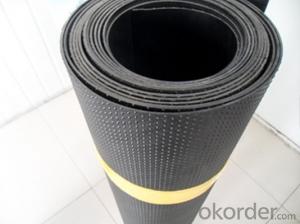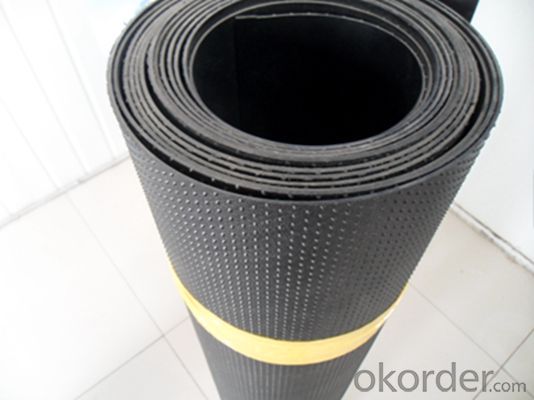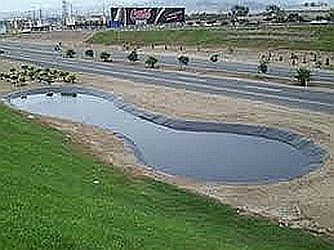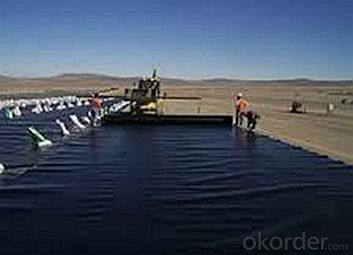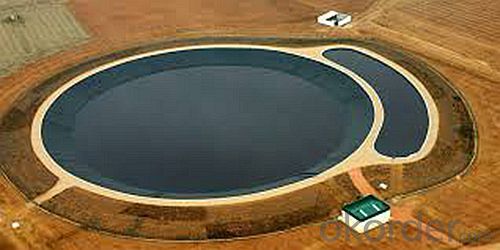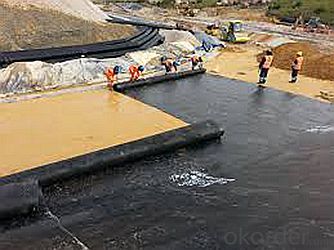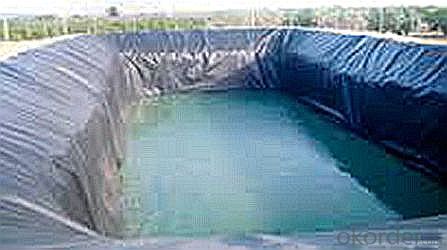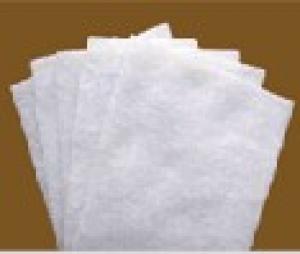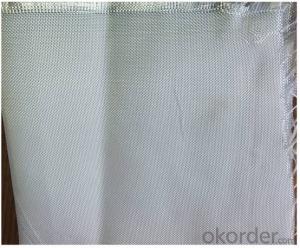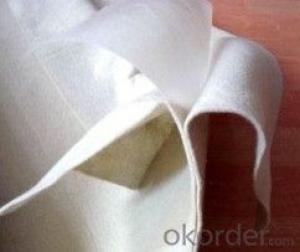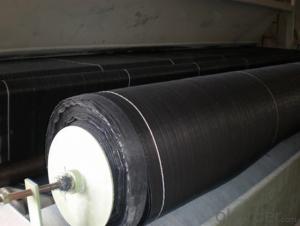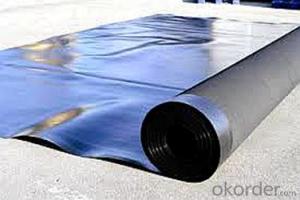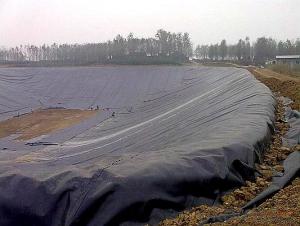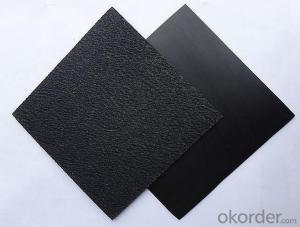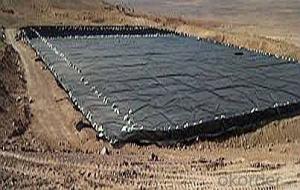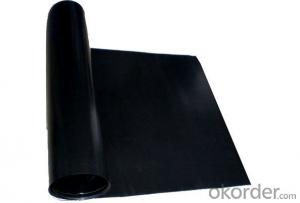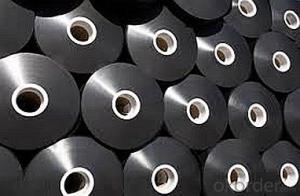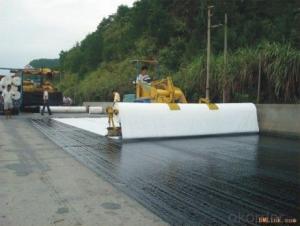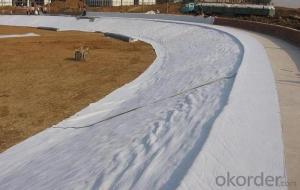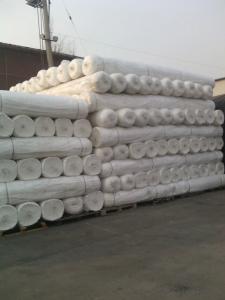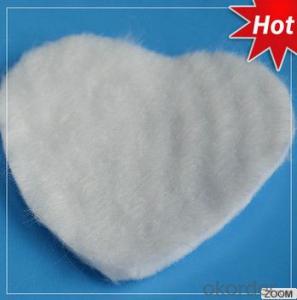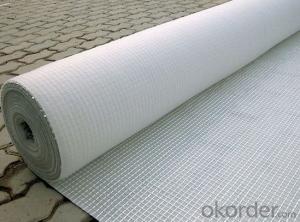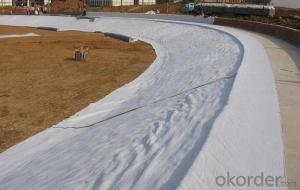Super Geotextile 8 Oz Geomembrane for Radioactive or Hazardous Waste Liquid
- Loading Port:
- China main port
- Payment Terms:
- TT OR LC
- Min Order Qty:
- 1000 m²
- Supply Capability:
- 1000000 m²/month
OKorder Service Pledge
OKorder Financial Service
You Might Also Like
Specification
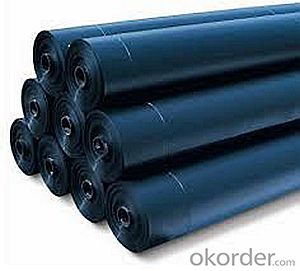
Product Introduction
HDPE Smooth Face geomembrane are the preferred products for lining projects requiring low permeability , corrosion protection ,
exceptional chemical and ultraviolet resistance properties , which makes them extremely cost
effective for many applications such as waste landfill , storage reservoirs ,canals , powr plants in energy , vapor barriers ,
and waste water treatment in the line of industry and aquaculture and agriculture projects.
Our Service
Quality assurance
1.On a regular basis or as per your request,we entrust national testing agencies to conduct quality inspections
2. Strictly in accordance with the ISO9001-2008 international quality system standard,we monitor and manage the whole process throughout production,quality testing,and measurement to ensure product quality
3. For quality-related construction delay or substandard construction(except for damage or losses due to customer’s responsibility or irresistible natural disasters),we have refunding,replacement,and repair services.We will respond to customers’ feedbacks on quality issues within 24 hours.
Packaging & Shipping
Packing: PLASTIC FILM INSIDE, AND WOVEN BAG OUTSIDE
Shipping: About 15 days after receipt the deposit
FAQ:
Q: What kind of payments does jenor support?
A: T/T, L/C, Cash are accepted.
Q: Do you charge for the samples?
A: Accordeing to our company policy, the samples are free, we only charge the freight fee. And we will return the freight fee during the next order.
Q: Can you produce according to customers' design?
A: Sure, we are professional manufacturer, OEM and ODM are both welcome.
Q: Do you have other products?
A: Yes, please check the pictures:
- Q: Are geotextiles resistant to punctures and tears?
- Yes, geotextiles are generally designed to be resistant to punctures and tears. They are made from strong materials that provide durability and can withstand external forces, making them an effective solution for various applications requiring such resistance.
- Q: Can geotextiles be used in road construction?
- Yes, geotextiles can be used in road construction. They are commonly used as a stabilization measure to reinforce the soil, control erosion, and enhance the overall performance of the road. Geotextiles help in distributing the load evenly, improving drainage, and preventing the intermixing of different soil layers. Additionally, they can also provide a barrier to prevent the intrusion of fine particles into the road base.
- Q: Is the case, we detect the company now want to engage in expansion (that is, increase the test items), the need for material to do qualification certification. But I have not done before, do not know their own data done unreasonable. Take the data mainly for reference, know the approximate range of the various parameters. Question added: it is best to have data logging source and derivation formula to support the reasonableness of this result, thank you! More
- Hello, can only help you this, do not know useful to you useless factory production geotextile geomembrane drainage board
- Q: How do geotextiles contribute to disaster management?
- Geotextiles play a crucial role in disaster management by providing effective solutions for various disaster-related challenges. They can be used to reinforce unstable slopes, control erosion, and stabilize soil during floods, earthquakes, or landslides. Geotextiles also aid in the construction of temporary roads, shelters, and embankments, allowing for easier access to affected areas and facilitating relief operations. Their ability to filter and drain water helps in managing excess rainfall or groundwater, preventing further damage. Overall, geotextiles are versatile and reliable tools that contribute to mitigating and managing the impacts of disasters.
- Q: How do geotextiles help with soil reinforcement in pavement systems?
- Geotextiles provide soil reinforcement in pavement systems by acting as a barrier between different layers of soil, preventing their intermixing and maintaining the stability of the pavement. They distribute the load more evenly, reducing the potential for soil settlement and rutting. Additionally, geotextiles enhance the overall strength and durability of the pavement system by providing tensile strength and preventing the migration of fine particles, ultimately improving the performance and lifespan of the pavement.
- Q: Are geotextiles suitable for use in stormwater management systems?
- Yes, geotextiles are suitable for use in stormwater management systems. They are commonly used in a variety of applications within these systems, such as erosion control, filtration, and drainage. Geotextiles can effectively filter sediment and pollutants, prevent soil erosion, and provide stability to stormwater infrastructure.
- Q: What are the benefits of using geotextiles?
- There are several benefits of using geotextiles in various applications. Firstly, geotextiles provide effective erosion control by stabilizing the soil and preventing it from being washed away by water or wind. Secondly, they enhance the drainage system by allowing water to pass through while retaining the soil particles, thus improving the overall performance of the infrastructure. Thirdly, geotextiles act as a barrier to separate different soil layers or materials, preventing their mixing and maintaining their integrity. Additionally, geotextiles can increase the load-bearing capacity of soils, making them suitable for construction or reinforcement purposes. Lastly, geotextiles are cost-effective and easy to install, reducing both the time and labor required for the project.
- Q: What are the factors affecting the performance of geotextiles?
- There are several factors that can affect the performance of geotextiles, including the type of material used, the manufacturing process, the installation method, the environmental conditions, and the design considerations. The strength, durability, and permeability of the geotextile, as well as its ability to withstand chemical and biological degradation, play a significant role in its performance. Additionally, factors such as soil characteristics, loading conditions, and the presence of water or chemicals can also impact the performance of geotextiles. Proper selection, installation, and maintenance are crucial in optimizing the performance and longevity of geotextiles.
- Q: Polyester geotextile filter layer sets what the amount
- The Do not understand what you mean
- Q: How are geotextiles used in sports field construction?
- Geotextiles are used in sports field construction to stabilize the soil, improve drainage, and prevent the migration of soil particles. They are commonly used as a base layer under the turf to enhance the field's durability and longevity. Additionally, geotextiles help to reduce the risk of erosion and maintain the field's evenness, allowing for optimal playing conditions.
Send your message to us
Super Geotextile 8 Oz Geomembrane for Radioactive or Hazardous Waste Liquid
- Loading Port:
- China main port
- Payment Terms:
- TT OR LC
- Min Order Qty:
- 1000 m²
- Supply Capability:
- 1000000 m²/month
OKorder Service Pledge
OKorder Financial Service
Similar products
Hot products
Hot Searches
Related keywords
